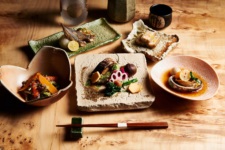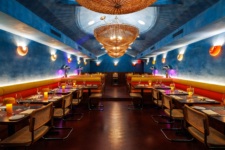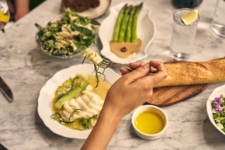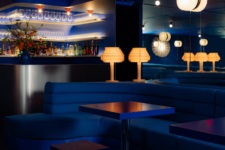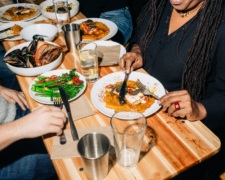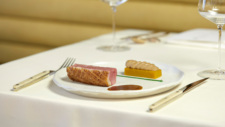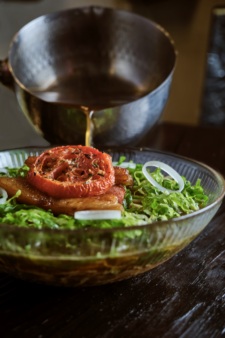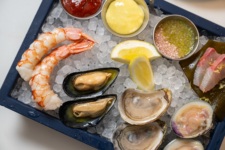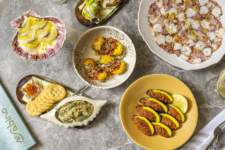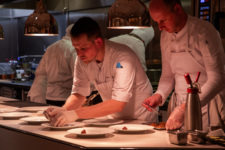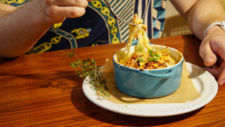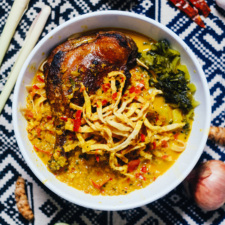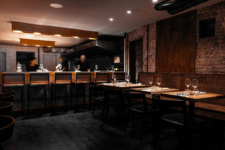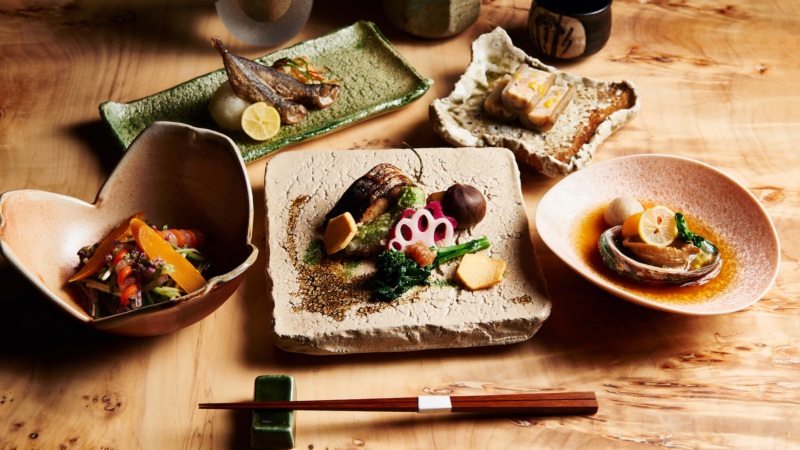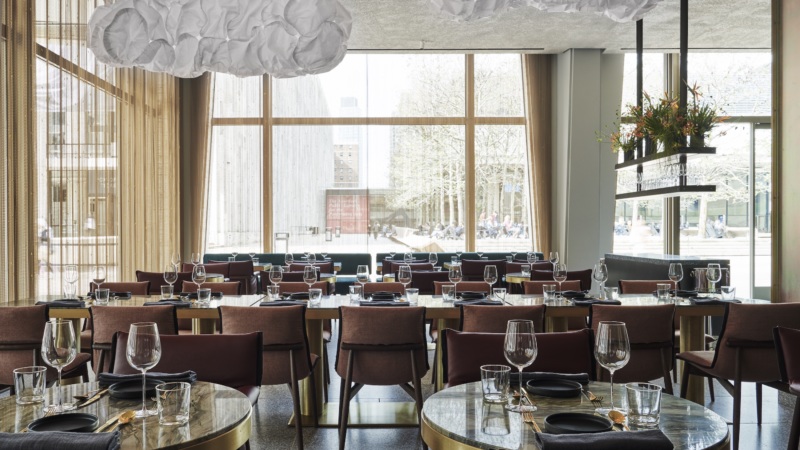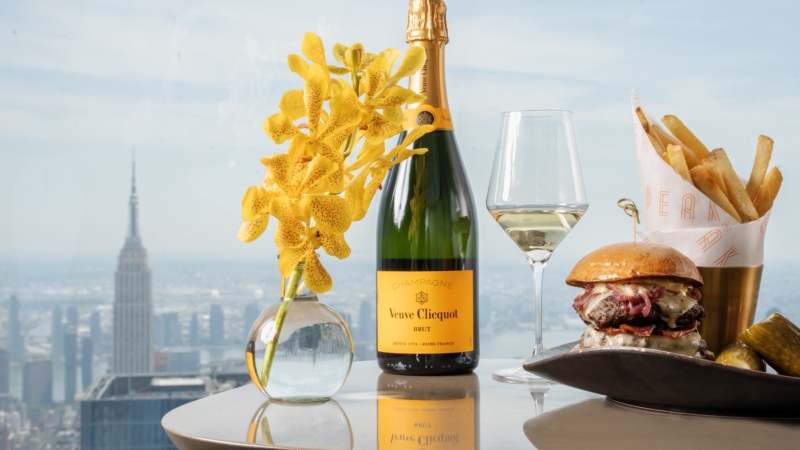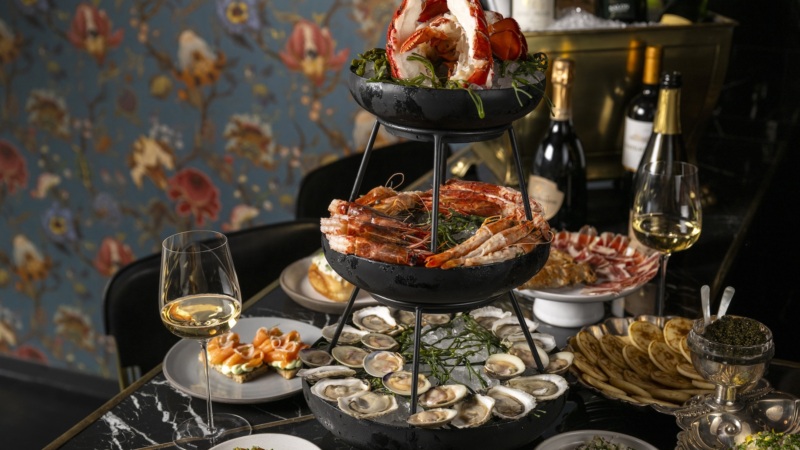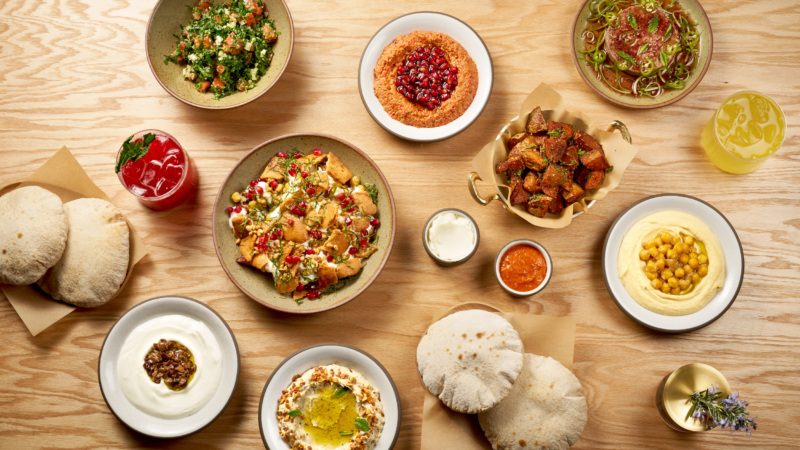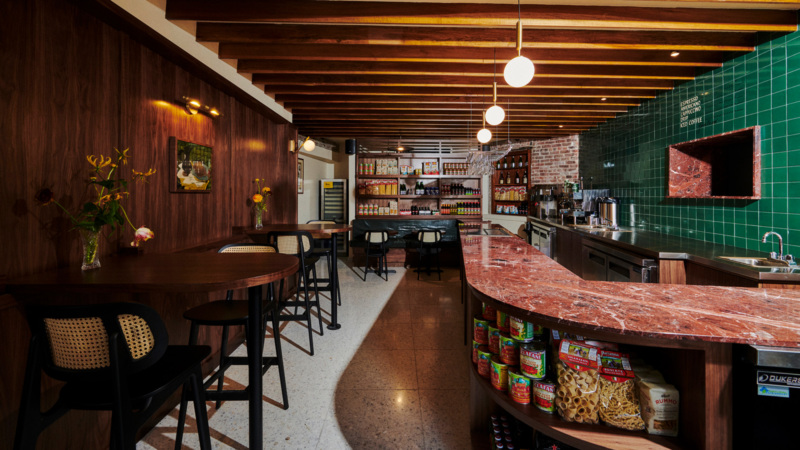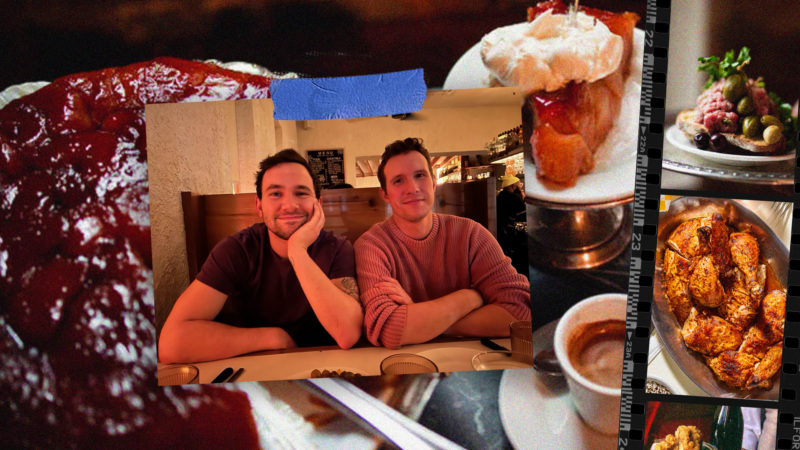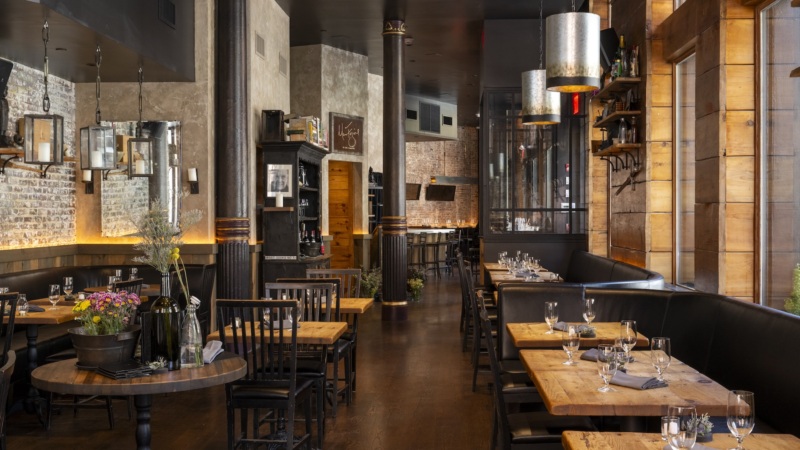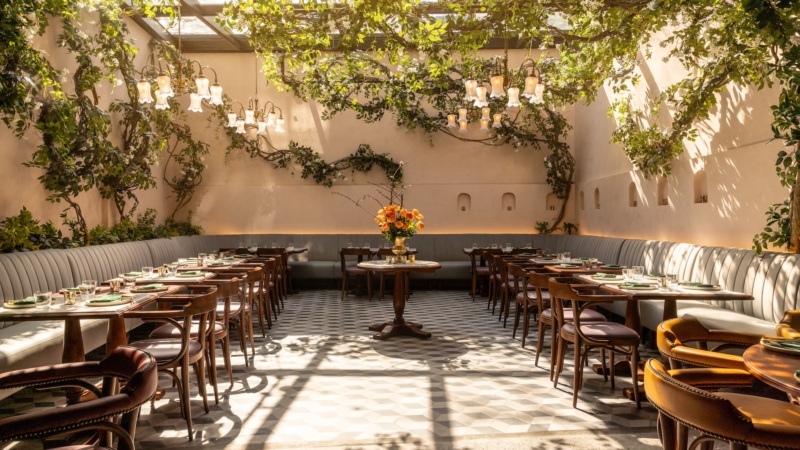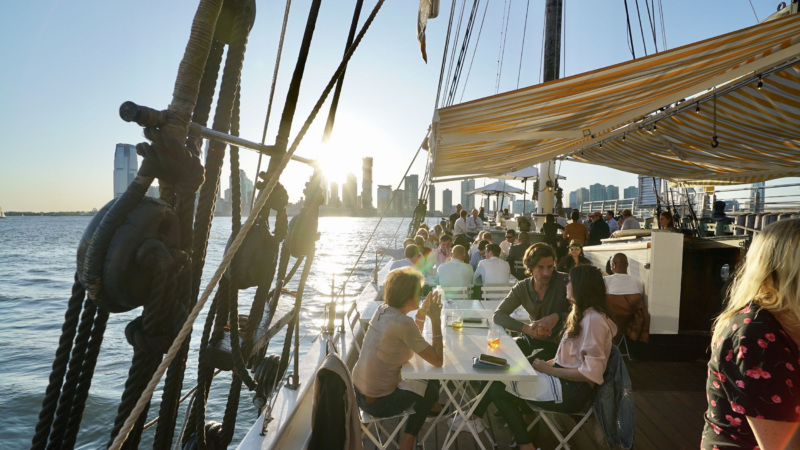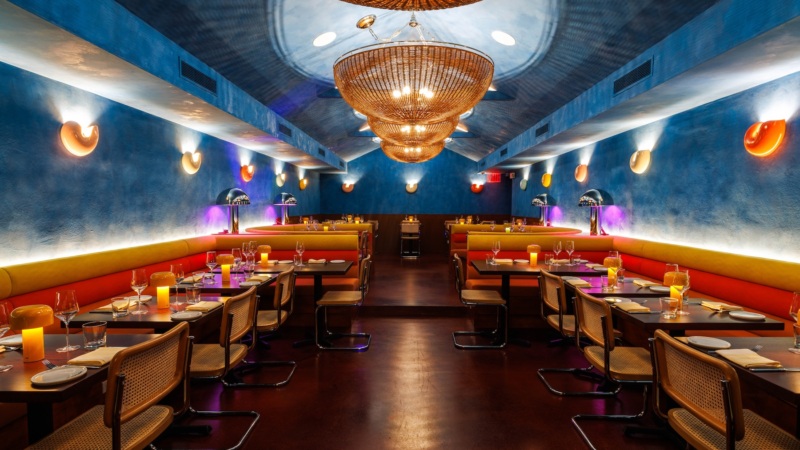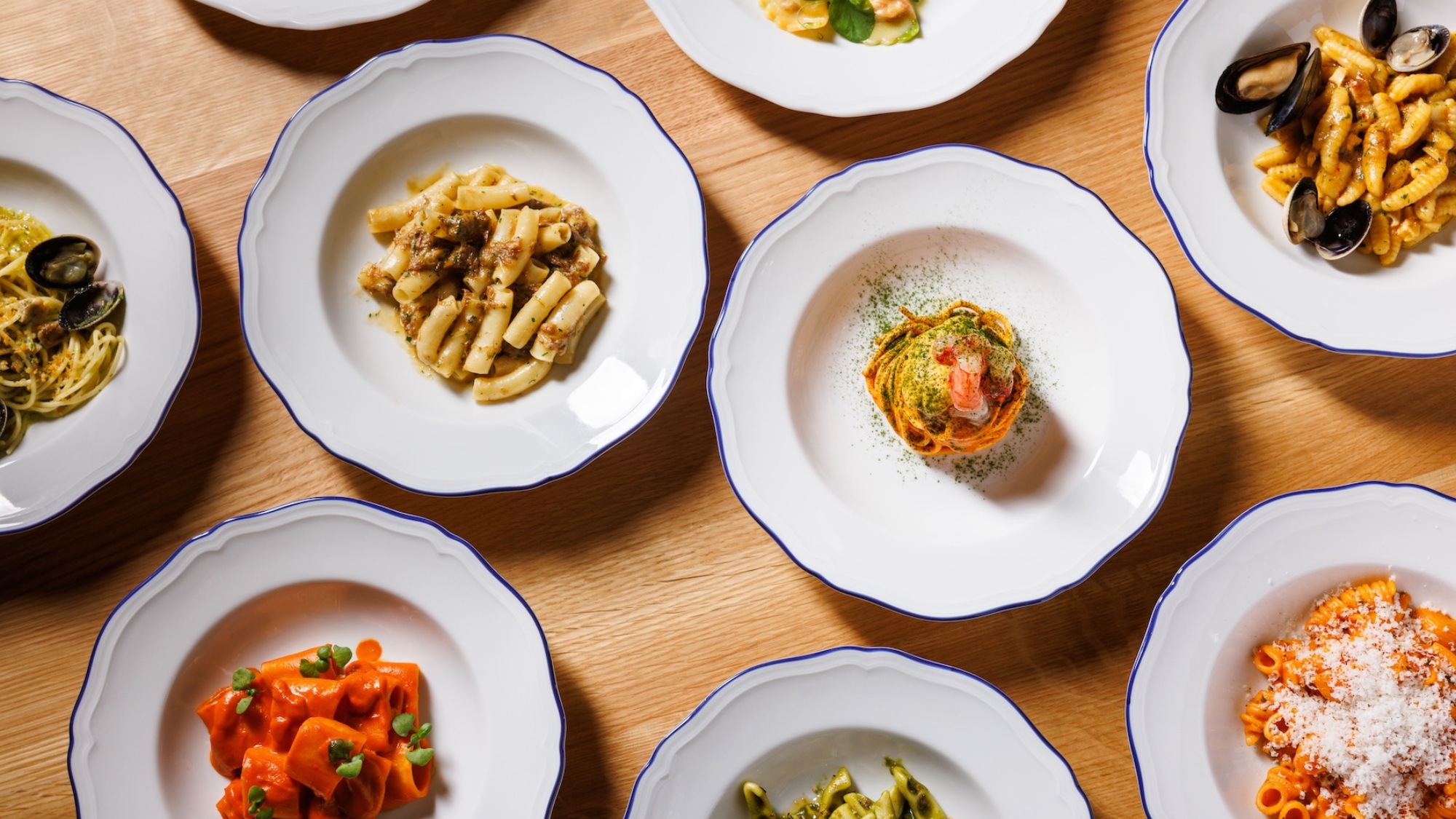
7 Things to Know About Massara, New From the Rezdôra Team
Following the incredible success of Rezdôra, which first opened in 2019, it’s highly likely that New Yorkers will be heading en masse to check out Massara, the second restaurant from chef Stefano Secchi and restaurateur David Switzer. We sat down with Secchi to get all the details you should know about Massara, now open in Flatiron, before you go.
The Resy Rundown
Massara
-
Why We Like It
This sequel to Rezdôra from chef Stefano Secchi focuses on the cuisine and culture of Campania, where wood-fired cooking, fresh vegetables and seafood reign supreme. Get the pastas, of course, including the cold one (trust us), but also don’t overlook the pizzette, grilled vegetables, great cocktails, and so much more. -
Must Orders
Crudo pizzette; corteccia (sausage ragú and broccoli rabe pasta); cavatelli allo scoglio; “If Pasta Fredda Was Eaten in Amalfi” (cold pasta); branzino; and sfogliatelle (try to order this along with your main dinner items). -
Essential Drinks
Pompelmo; Massara Negroni; anything from the wine list, featuring wines exclusively from Southern Italy.
-
Who and What It’s For
Fans of Rezdôra; anyone who loves pasta and pizzette; anyone following the Mediterannean Diet (albeit loosely); and wine lovers. Come here for any occasion, whether it’s date night, group night, or just a night where you’re craving Italian food. -
How to Get In
Reservations drop 14 days in advance at midnight, and they do accept some limited walk-ins. -
Fun Fact
The 35-year-old starter for Massara’s pizzette dough is named for the chef who largely inspired the restaurant, Dino Borrello, and it was sourced directly from Campania, Italy.
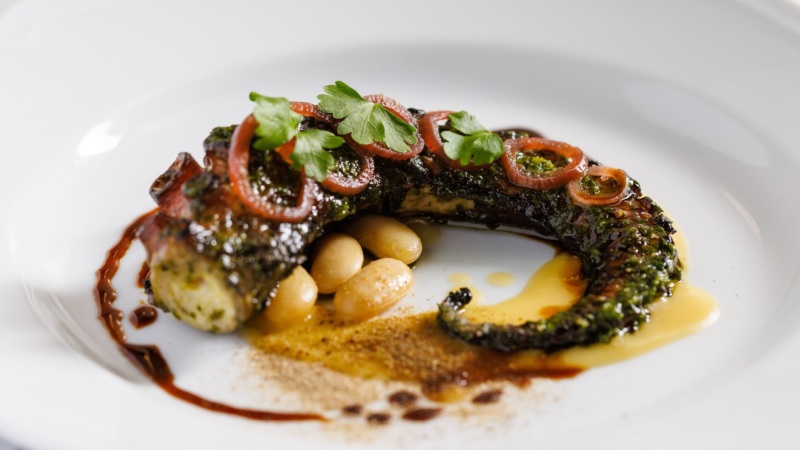
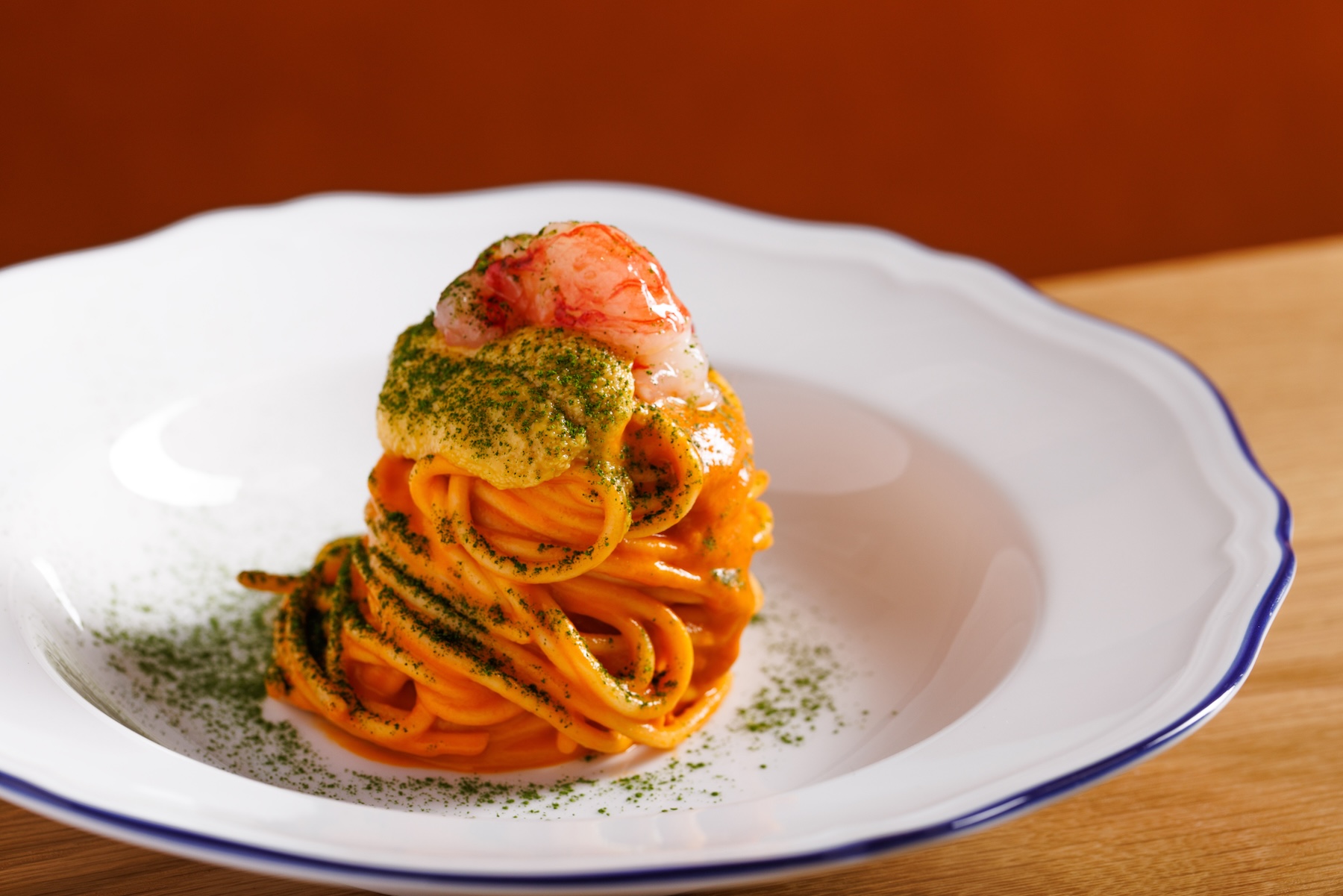

1. First things, first: Yes, there will be pasta.
Everyone and their nonna knows about Rezdôra’s famed pasta dishes — Grandma Walking Through Forest in Emilia, anyone? — and there will certainly be pasta on the menu at Massara. However, the kinds of pastas served here are representative of Italy’s Campania region in Southern Italy, which also encompasses Naples. “The pastas will be completely different,” says Secchi. That means more pastas made from semolina flour and water, versus those made with eggs like you’ll find at Rezdôra, which celebrates the cooking of Emilia Romagna in Northern Italy. And much more tomato sauce.
One standout pasta from the menu says Secchi, is corteccia pasta inspired by Cilento, made with white sausage ragú and broccoli rabe. There’s also a lovely cavatelli allo scoglio, featuring fresh seafood. And while the majority of Massara’s menu features classic Italian dishes, about a third of them are more contemporary in spirit, including one pasta that may prove to be highly controversial: a cold pasta. Made with spaghettoni, it’s got a base rooted in almonds and gambero rosso (red prawn) stock, finished with sea urchin and a shrimp crudo. Its official name? “If Pasta Fredda Was Eaten in Amalfi.”
“People will either love it or hate it,” Secchi says. “I like for people to have a conversation about those things I think it’s nice to kind of push people’s buttons and feel excited about their passions.”

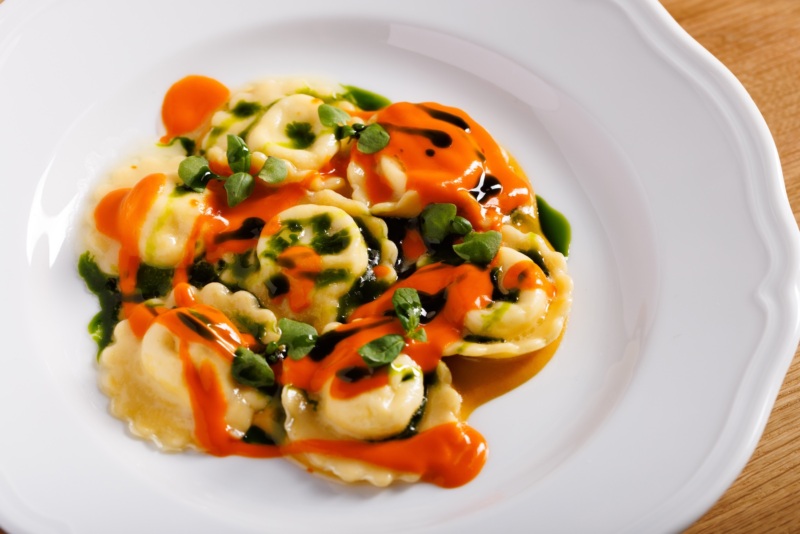
2. But it’s not just pasta that you should order here.
Just as Rezdôra does a deep dive into Emilia Romagna, Massara hopes to do the same for Campania, the cradle of Italy’s Mediterranean roots.
“When we talk about the Mediterranean diet, we’re talking about the food from this region,” Secchi says of Campania. “With Rezdôra, we have more lardo, Parm, more dairy. In Campania, it’s more vegetables and more olive oil, more seafood, and a lot of live-fire cooking.”
He notes how a holy trinity of tomato sauces will be found throughout the menu, incorporating San Marzano, cherry tomatoes, and giallo (small yellow tomatoes), and that Massara’s mozzarella will come from the water buffalo that are so endemic to the region. You’ll also see garum colatura, a fish sauce made from anchovies that’s sourced from Chitarra, Italy, and plenty of Sorrento lemons.
One thing you should definitely order while at Massara is all manner of pizzette — smaller, antipasti-style bites that are not to be confused with pizza, Secchi emphasizes (The big difference? They’re smaller). There’s everything from a classic margherita to a “crudo” with bufala mozzarella, arugula, and prosciutto.
“We are not a pizza restaurant,” he explains. “We don’t want people to think they are coming here for pizza and a glass of wine. Pizzette are a small taste of what you would have a restaurant [in Campania], and we’re very passionate about having a full dining experience within the region. We’d be doing a disservice if we just did pizzas from the wood-burning oven.” That being said, there will eventually be a pizzette tasting menu, somewhat similar to Rezdôra’s pasta tasting menu, that will last for two hours and goes for $90 per person.
Also on the horizon is a large-format dining experience that showcases that wood-burning grill in all its glory: capra (goat), four ways: braised, roasted, grilled, and in cannelloni for $50 per person. For now, diners can order grilled wagyu (market price) and a whole roasted branzino.
Lastly, do not sleep on the desserts, which are overseen by Rezdôra’s pastry chef Dominique Canvin. Following a two-week R&D trip with Secchi to Campania, Canvin has come up with a menu of sweets that includes a warm sfogliatelle tasting that’s baked to order (put your orders in ahead of time if you can), featuring flavors like citrus, pistachio, chocolate, and cherry; a gelato affogato, and a gelato tasting with small cones. “It’ll be a lot of things that are really aggressively Italian, but also stuff people haven’t necessarily seen before,” Secchi adds.

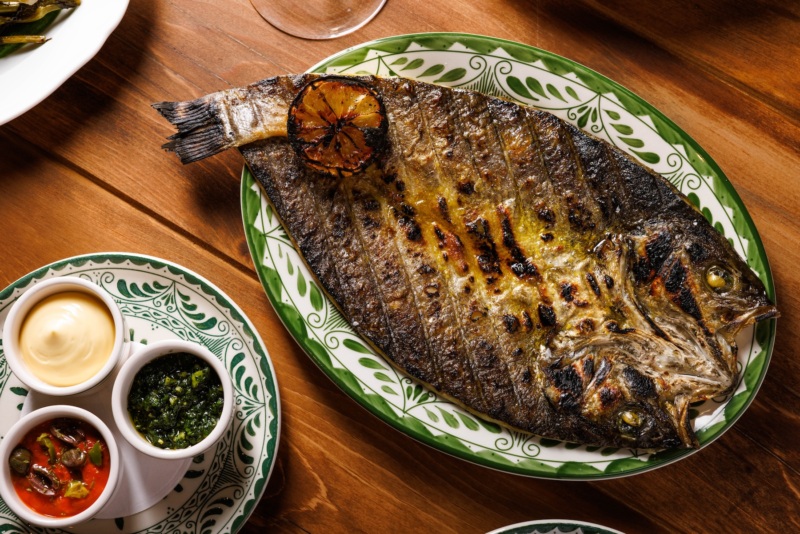
3. This is personal.
Secchi grew up in Dallas and when he wasn’t traveling to Italy to visit family in Lombardy or Sardinia, he was often eating the foods of Campania and Calabria at home in Texas, thanks to the first chef of his father’s restaurant, Ferrari’s, chef Dino Borrello.
In fact, the starter for Massara’s pizzette was inspired by a fond memory he shared with Borrello as a teen. “We were fishing with him — he had a small apartment on the Mediterranean coast, and it was kind of a dump — but we were using flour and water to create this paste that we’d put on the end of the hooks to catch the fish,” Secchi recalls. “We left that flour and water outside for a few days, and when we were cleaning it up, [Dino] said, ‘No, we should keep it. It’ll have wild yeast from Campania in there.’ We didn’t even realize it at the time, and it became the starter for the next 35 years from my family. That same starter is the one we’re using here at Massara.” Dino’s name happens to be the name of the starter, too.
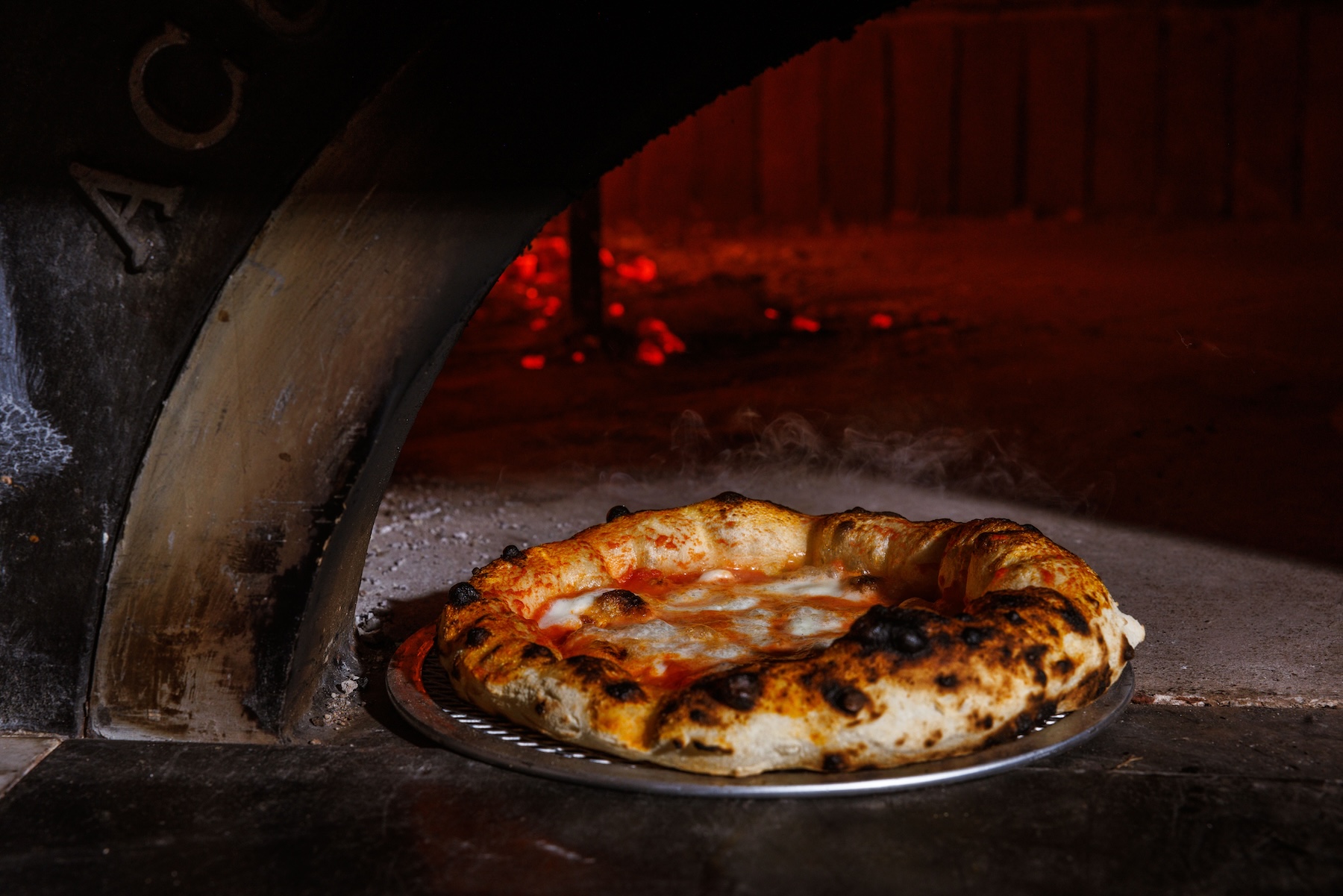
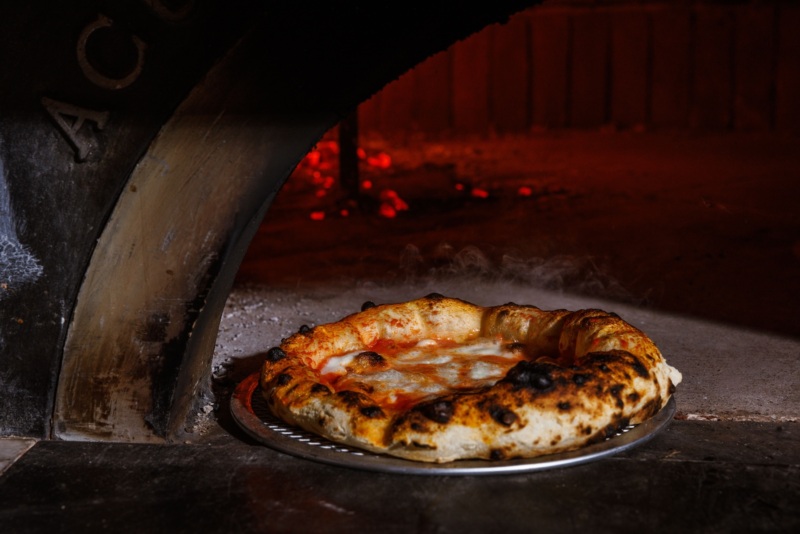
4. It’s all in the family.
The name of the restaurant pays tribute to “the nonnas who have been the pillars who have influenced all these big chefs and who push the traditions forward and is in charge of passing on the recipes to future generations,” Secchi notes. “In Emilia Romagna, the term for that person is ‘Rezdôra,’ and in Campania, it’s ‘massara’ in this one dialect in Campania.”
But when you talk about family units, the one that Secchi considers first and foremost as he opens this new restaurant is his staff. He says he’s wanted to open a second restaurant to “give opportunities to people who have been with us for so long but didn’t have space to grow in management at Rezdôra. I know them like family.” He adds, “We treat the people we work with even better than the guests; we really care about that.”
And funnily enough, it’s his staff who helped him, in a way, find the new space for Massara, which is just conveniently located around the corner from Rezdôra. “Before the pandemic a lot of our team would go to this bar, called Punch,” he says, “and then the opportunity to open a restaurant there came up.”
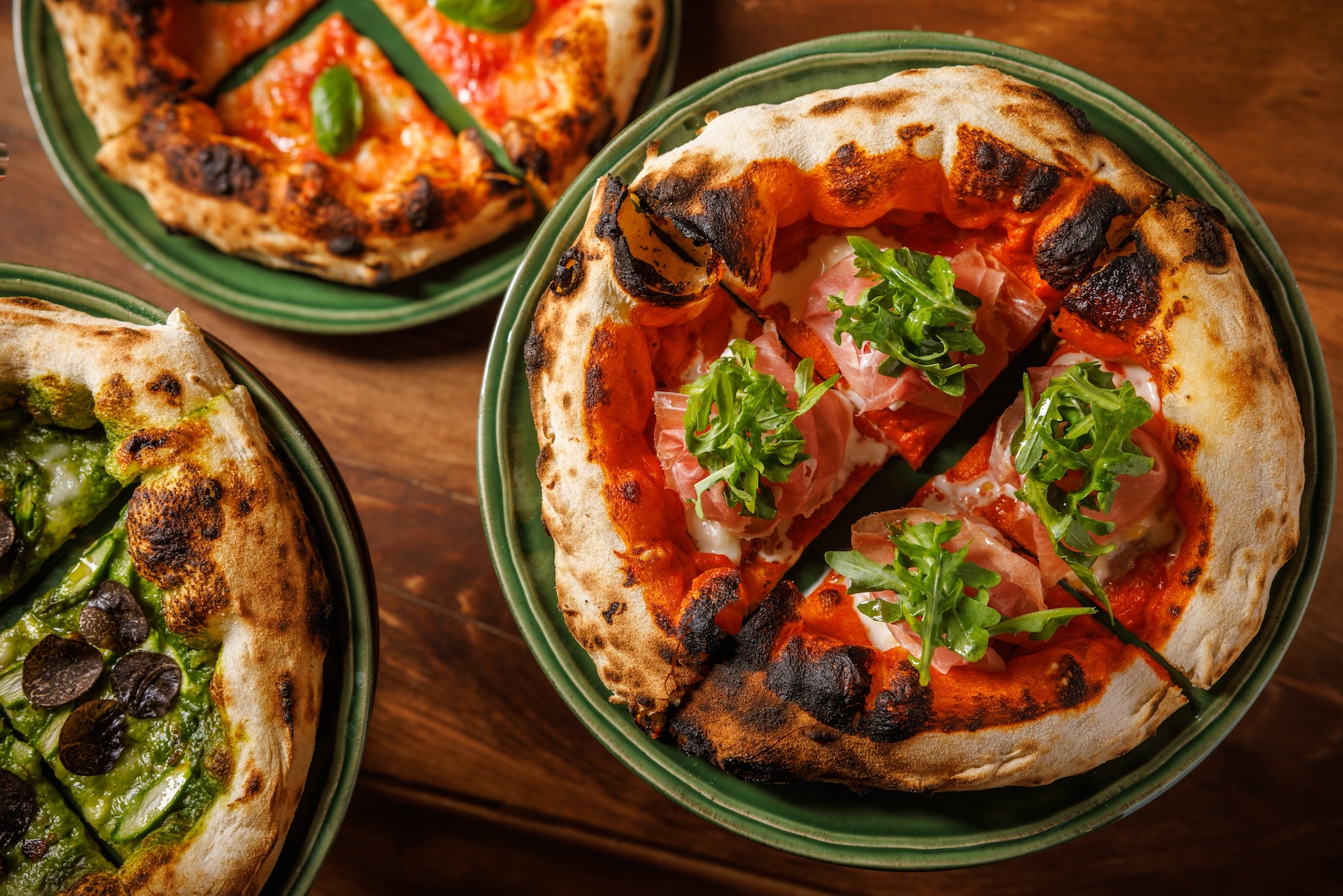
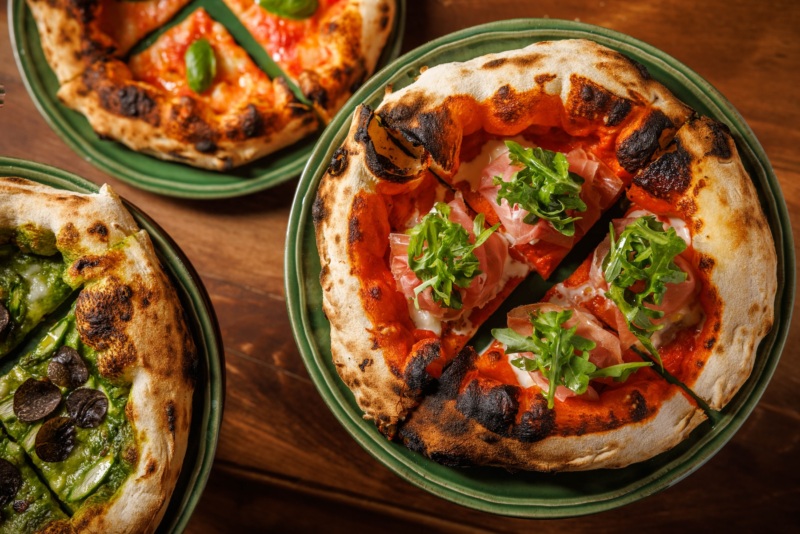
5. So, about the new space …
Massara is much bigger than Rezdôra is, with 105 seats (Rezdôra only has 60) and two stories and it’s designed to feel like a “farmhouse in Italy,” only in the heart of Manhattan. The centerpiece of the entire space is the custom wood-burning oven and a large communal table crafted from the original wooden beams of the building, which was first built in the early 1900s. Dark green and gold colors accentuate much of the wooden furniture found throughout the dining room, too. And for added decor, they’re also showcasing their daily haul of fresh fruits and vegetables from the local farmer’s market in ceramic stands situated around the open kitchen.
Fans of Rezdôra may also spot a similar targa, or tile, that says “Massara,” just like the one they’ve likely seen at Rezdôra. “The same company made the same tile,” Secchi explains, and “it makes you feel like you’re in a farmhouse in Italia.”

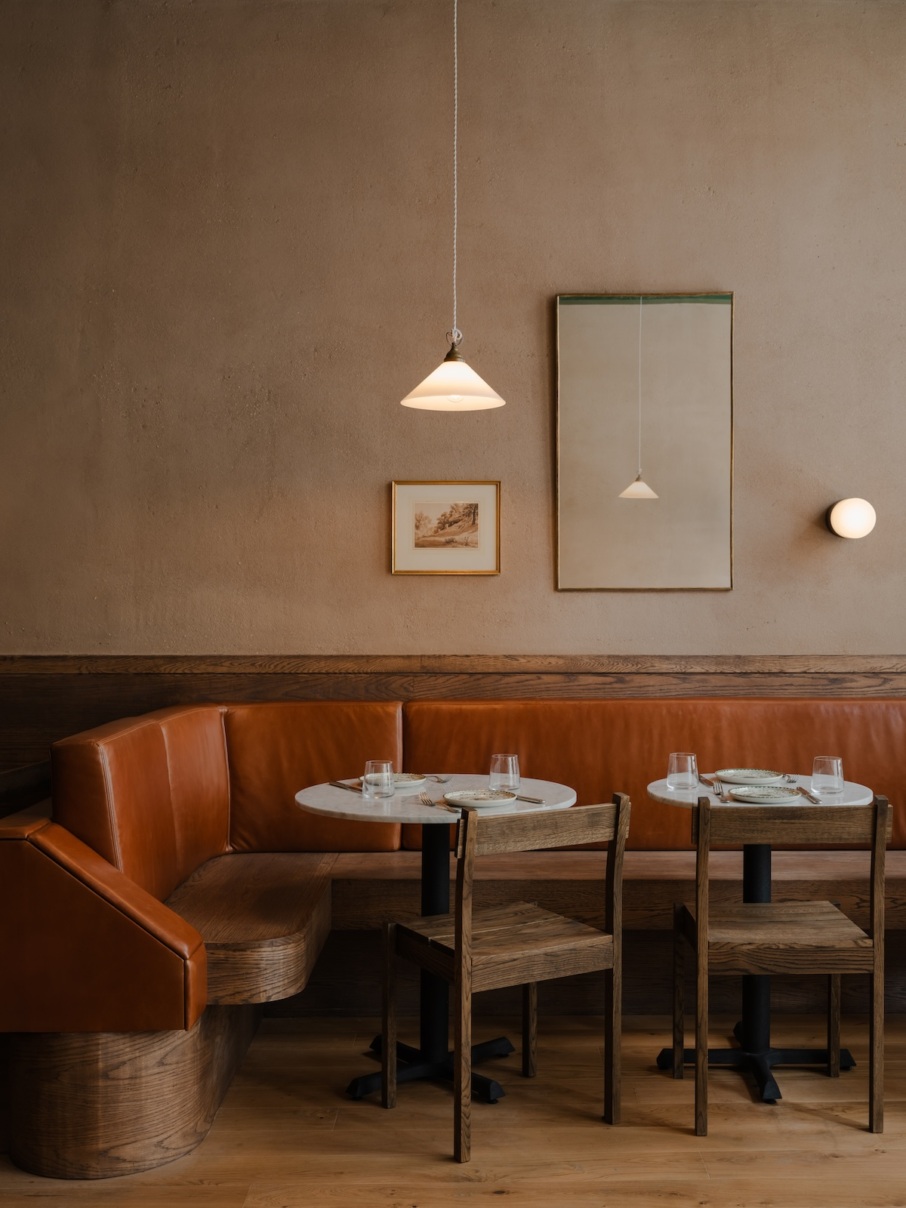
6. Don’t sleep on the drinks.
Morgan Marak, who started as a bartender at Rezdôra is the bar director for both restaurants, and Massara’s list of drinks leans in heavily toward amaro and ingredients inspired by Southern Italy. Cocktails are classic, but with fun little twists, like the Strega Nona Needs a Spritz, made with Amante 1530, Strega, lemon bitters, and prosecco, or the Metá e Metá, a twist on a martini made with olive-oil-washed Elena Bianco vermouth.
The wine list, curated by wine director Michael Duffy, who formerly worked at Locanda Verde and Al Coro, is composed entirely of Southern Italian wines, starting in Tuscany and going all the way south to Sardinia.
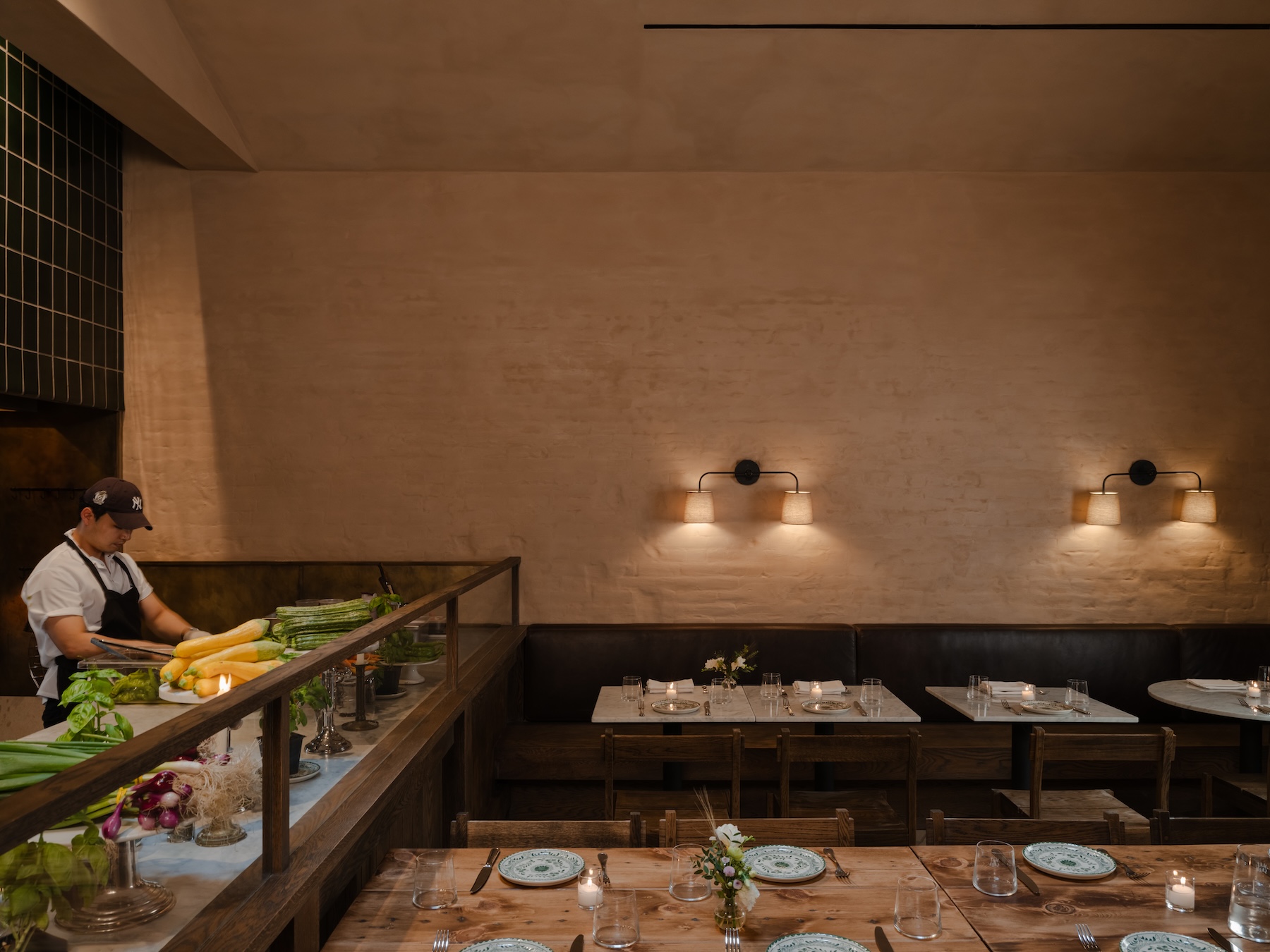
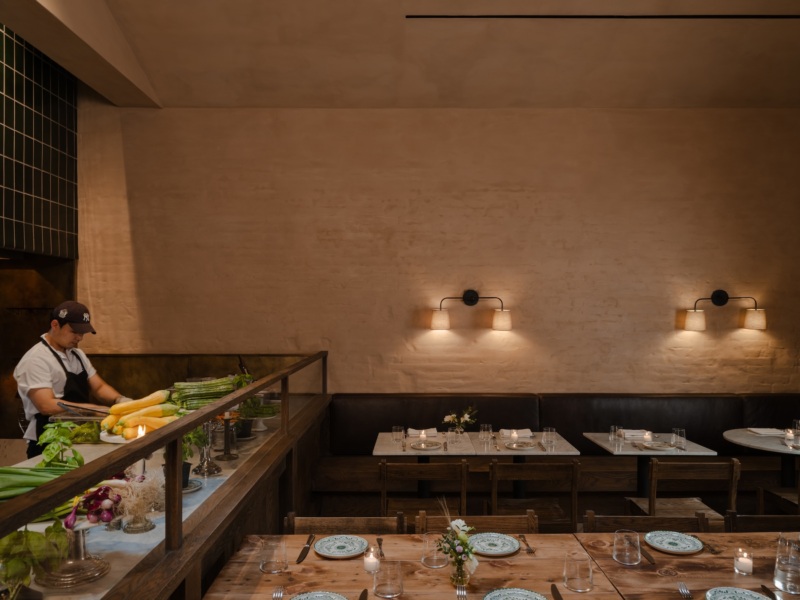
7. Your odds of getting in here are much better …
Than they are at Rezdôra, thanks mostly to the fact that Massara is nearly twice the size of Rezdôra. Reservations drop 14 days in advance at midnight, and some limited walk-in seats are also available.
When you do come to Massara, though, Secchi hopes diners will embrace the restaurant like they did with Rezdôra, and see it for what it is: the story of the foods and culture that have shaped him deeply.
“We don’t hide behind anything,” he says. “I worked in Italy for many years, my family is from there. I’ve eaten these dishes, and these dishes come from taste memories we’re bringing back from my whole life.”
Massara is open Mondays through Saturdays for dinner.



